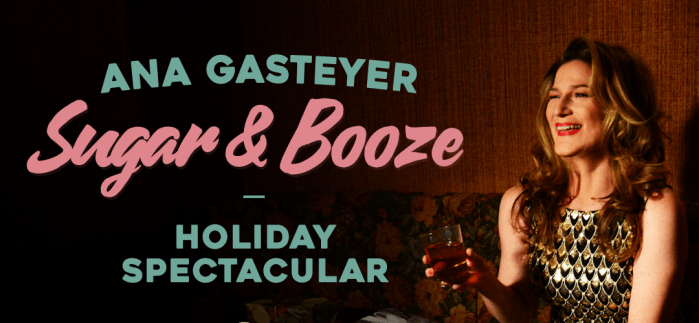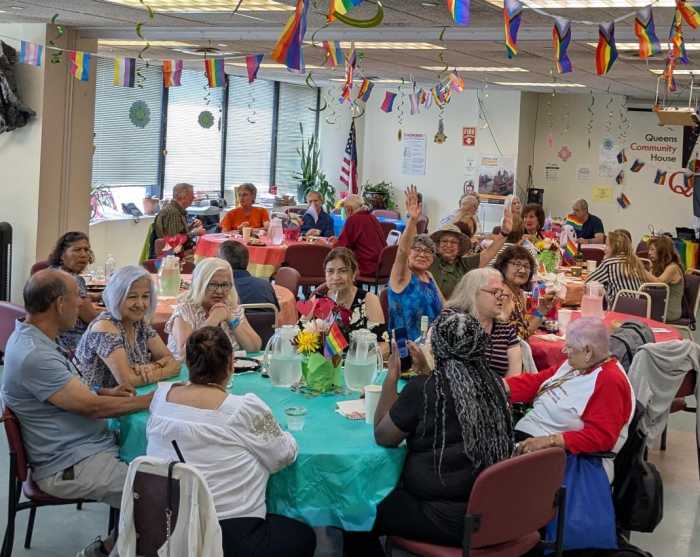Vicki Eaklor’s “Queer America” falls short of Howard Zinn’s iconic standard
The US Department of Education’s latest National Assessment of Educational Progress (NAEP), released last week, offers more depressing results demonstrating our schools’ continued record of turning out students who are historically illiterate to a stunning degree.
Only 12 percent of high school seniors had a basic knowledge of US history, and a majority of fourth-graders could not name a significant accomplishment of Abraham Lincoln.
But how many gay Americans know that Lincoln was queer? (See this writer’s September 1, 2010 article, “Forget Mehlman, What About Lincoln?,” a link to which appears in the online version of this review at gaycitynews.com.) When I speak to gay audiences, I am constantly dismayed at the degree to which they are ignorant of our own history. This is a great tragedy, for as William Faulkner once wrote, “You must always know the past, for there is no real Was, there is only Is.”
Since pioneer gay historian Jonathan Ned Katz published his groundbreaking 1976 documentary collection “Gay American History: Lesbians and Gay Men in the U.S.A.” (still in print in a revised Penguin Meridian paper edition), there have been huge achievements in excavating the hidden history of gay people throughout the ages. (Katz’s invaluable historical repository, OutHistory,org, meanwhile, desperately needs more funding and institutional support.)
Some of the most impressive historiography has been produced by gay community historians operating outside the academy, like Katz and the late Allan Bérubé, who unearthed the untold stories of the gay “greatest generation” in uniform during World War II (see this writer’s May 26, 2011 article on Bérubé, “He Learned from the Master,” a link to which also appears online).
Sad to say, despite some sterling work by gay university-based historians, much of what comes out of gay studies programs these days is altogether too precious, artificial, and written in an academic jargon indigestible to most LGBT people. Reclaiming our own history is still not getting enough attention from these “queer studies” programs; witness Larry Kramer’s long and ultimately failed fight with Yale’s powers-that-be to have the Larry Kramer Initiative he and his brother endowed at that university become more history-oriented and relevant.
There are huge areas of gay history that remain, for the most part, unexplored.
As American historian Christopher Phelps, who teaches at the UK’s University of Nottingham, wrote not long ago, “As a sexual orientation or identity, homosexuality arose only with the individual wage labor and the separation of household and work characteristic of capitalism. A mystery remains, though, for how did the very same mode of production that created the conditions for this new consciousness also produce intense compulsions for sexual repression? Why, if capitalism gave rise to homosexuality, are the ardent defenders of capitalism, whether McCarthyist or on our contemporary Republican right, so often obsessed with attacking same-sex desire? How does capitalism generate both the conditions for homosexuality and the impulse to suppress it?”
“Queer America: A People’s GLBT History of the United States,” a work by Alfred University’s Vicki L. Eaklor –– who introduced one of the first gay and lesbian history courses in the country in 1991 –– attempts to provide a historical context within which the questions raised by Phelps can be explored.
Inspired by the late, great historian Howard Zinn’s “A People’s History of the United States” and created as part of a series of similar books under his editorship before his death early last year, “Queer America,” recently published by the New Press, focuses primarily on the panorama of transgressive sexual behaviors that followed the emergence of the identity term “homosexual.” Coined by the Austrian novelist Karl-Maria Kertbeny in 1869, in a pamphlet arguing against an anti-sodomy law, the term began to gain widespread traction in the American vocabulary at the turn of the last century.
“The history of people thinking of themselves primarily in terms of homosexual or heterosexual (and later GLBT and/or queer) follows the general patterns of US history and history writing,” Eaklor writes. “After World War II, all GLBT people may or may not have accepted themselves, but those who did adopted a concept of themselves as a ‘minority’ deserving of the same rights as ‘straight’ Americans. The way in which they did so follows important patterns of US historical thought, bringing GLBT Americans into a ‘mainstream’ of the driving forces of our history, not just as victims but as actors in their destinies. In this way GLBT history is similar to other minority histories, be they of African-Americans women, laborers, or any other self-defined group.”
One of the most compelling arguments in the debate over whether or not same-sex desire is a “choice” is its persistence throughout the ages despite extraordinary legal, religious, and pseudo-medical repressions. And, despite its cramped limitations as an essentially medical and diagnostic term, the relatively rapid spread of a “homosexual” identity here in the US testifies to an undercurrent of resistance present among homoerotically inclined Americans long before the crystallization of the modern gay movement with the Stonewall rebellion in 1969.
Thus, in 1907, a Boston man wrote to pioneering German homosexual liberationist and sexologist Magnus Hirschfeld –– who a decade before had founded the Scientific Humanitarian Committee to seek repeal of Germany’s criminalization of same-sex desire –– saying, “How many homosexuals I’ve come to know! Boston, this good old Puritan city, has them by the hundreds. Here as in Germany, homosexuality extends throughout all classes… Reliable homosexuals have told me names that reach into the highest circles of Boston, New York, and Washington, DC, names which have left me speechless with astonishment. I have also noticed that bisexuality must be rather widespread. There is astonishing ignorance among us of the Uranians [homosexuals]. I’ve come to know about their own true nature. This is probably a result of absolute silence and intolerance, which have never advanced real morality at any time or place. But with the growth of population and the increase of intellectuals, the time is coming when America will finally be forced to confront the riddle of homosexuality.” Such prescient optimism, six decades before Stonewall, is telling.
Eaklor insists, rightly so, that “gender cannot be fully separated from race and class,” writing, “Even after the crisis of the Civil War was resolved in favor of the Union, the republic faced the upheaval of Reconstruction and even more rapid industrialization. Masculine qualities were essential, it seemed, to fulfilling the duties of citizen and capitalist, while those feminine were their opposite. For those who believed this, effeminate men and masculine women were both threats in their own ways, undermining in one case and usurping in the other the ‘normal’ arrangements. This may help explain the eventual hostility against both groups, which only intensified in the 20th century once sexuality was defined by gender conformity.”
Among the vignettes of queer Americans in Eaklor’s book –– one new to me –– is her portrait of Ernestine “Tiny” Davis, a jazz trumpetist known as “the female Louis Armstrong.” As the star of the all-female International Sweethearts of Rhythm, formed in 1937 and “one of over forty all-women jazz/ swing bands,” Davis toured Europe during World War II entertaining the troops.
“Armstrong was among the band’s and Tiny’s fans (Count Basie and Ella Fitzgerald were others) and reportedly offered Davis up to ten times her $150 weekly salary to join his band,” Eaklor writes. “Asked later why she didn’t go, she responded, grinning, ‘Well, I loved them gals too much!’”
When the Sweethearts split up in 1949, Davis formed her own band, Tiny Davis and Her Hell Divers, and met musician Ruby Lucas (aka Renee Phelan), with whom she later opened a nightclub, Tiny and Ruby’s Gay Spot, which they ran on Chicago’s South Side through the 1950s. When Davis died in 1994, the two women had been partners for well over forty years.
Davis is unfortunately less remembered today than a raft of famous blues singers who were lesbians, including Bessie Smith, Alberta Hunter, Ma Rainey, Ethel Waters, and Gladys Bentley. But one wishes there were more portraits like the one of Davis in Eaklor’s book, and that more of their voices were heard.
Eaklor is not a felicitous writer — her style is by turns wooden and academic, she often refers to the work of other gay historians without detailing their findings adequately, and her organization of material is somewhat disjointed. Unfortunately, her book has none of the sweep and power which made Zinn’s “People’s History” a global bestseller and the author a celebrity.
While the second, post-Stonewall half of “Queer America” is a serviceable history of the modern gay rights movement, there are some rather extraordinary gaps, oversimplified elisions, and omissions in the first half of the book.
For example, although Eaklor mentions in passing how the homosexual liberationist ideas of the likes of Hirschfeld and Edward Carpenter first made their voyage across the Atlantic to America, she utterly fails to mention their principal, indeed sole, migration route –– through the American anarchist movement, which for decades maintained a strong and vibrant discourse that unfailingly defended the right to same-sex love.
This important story of the anarchists pro-queer agitation at a time when no other political movement or notable public figure in the US dealt with the issue of same-sex eroticism and love has been brilliantly told by Terence Kissack in his meticulously researched 2008 book, “Free Comrades: Anarchism and Homosexuality in the United States, 1895-1917” (see this August 28, 2008 review of it, “Anarchism and Gays,” a link to which appears online). Kissack’s book does not even make Eaklor’s extensive bibliography.
The great African-American lesbian poet and essayist Audre Lorde once wrote, “Somewhere on the edge of consciousness, there is what I call a ‘mythical norm,’ which each one of us knows ‘that is not me.’ In America this norm is usually defined as white, thin, male, young, heterosexual, Christian, and financially secure. It is within this mythical norm that the trappings of power often identify one way in which we are different, and we assume that to be the primary cause of all oppression, forgetting other distortions around difference, some of which we ourselves may be practicing.”
While Eaklor’s book helps puncture holes in that “mythical norm,” there is still a crying need for a volume from a more talented and inclusive pen that synthesizes all the most recent developments of gay historiography in this fifth decade after Stonewall, one that lets the survivors of that history speak for themselves.
Essentials:
QUEER AMERICA:
A People’s GLBT History of the United States
By Vicki L. Eaklor
The New Press
$17. 95 (paper); 274 pages




































